What ND filter do I need?
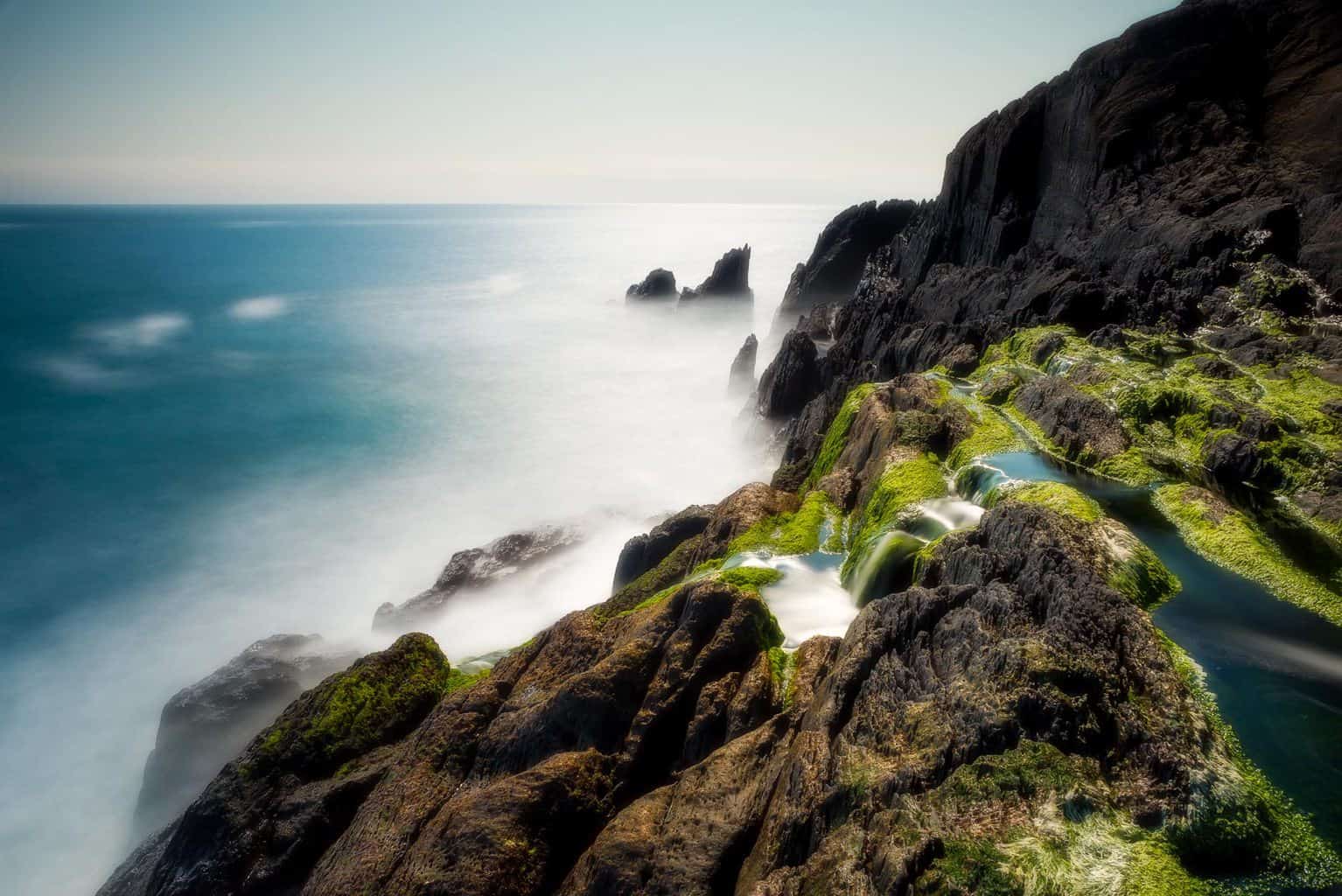
How to find out what ND filter you need to use.
There are two questions we need to answer to find what ND filter will work best for you.
Your old photographs are going to help you here also and it’s a simple cheat to figure out what ND filter you need and will work best for you. I walk you through how to do that further down the post look for the “Your Photographs hold the key” heading.
Getting back to the two questions you need to answer first.
- What type of ND filters should you buy? Square or Circular ND filters? I have a blog post explaining their pros and cons here. Yes, there are two different physical types of ND filters and they are very different so maybe have a look at that blog post. I will link to it again at the end of this article.
- Do you want to take 30-second exposures (photographs) or 1 or 2-second exposures? There are obviously a lot of different exposure options between the two but this is aimed at people starting out with ND filters so let’s keep it simple for now.
The answer to the first question is in the blog post I linked to and it’s something you don’t need to decide on straight away so let’s skip to the second question and figure out what strength of ND filter we need.
To help answer the second question let’s just presume for now you are photographing seascapes, rivers, waterfalls or cloud movement. As these are the most popular types of Long Exposure photography that require people to use an ND filters.
There are two photographs here to help you decide on the style of long exposure photography you want to capture.
The photograph above (at the top of the post) was a 30-second exposure, as you can see it smoothens out the water completely and creates this milky soft effect. This works well in in seascapes, waterfalls, rivers and for clouds too creating streaks running dramatically across the sky.
Usually, you would be using something like a 10-stop ND filter around sunset to achieve this but it all really depends on the light levels that you are shooting in at the time and your camera also. That’s something I will be getting back to later on.
The shot below was a one-second exposure. It retains the texture of the main sea body and highlights movement nicely. Usually, you would be using a 4 or six-stop ND filter to capture this image. Again depending on the light levels at the time.
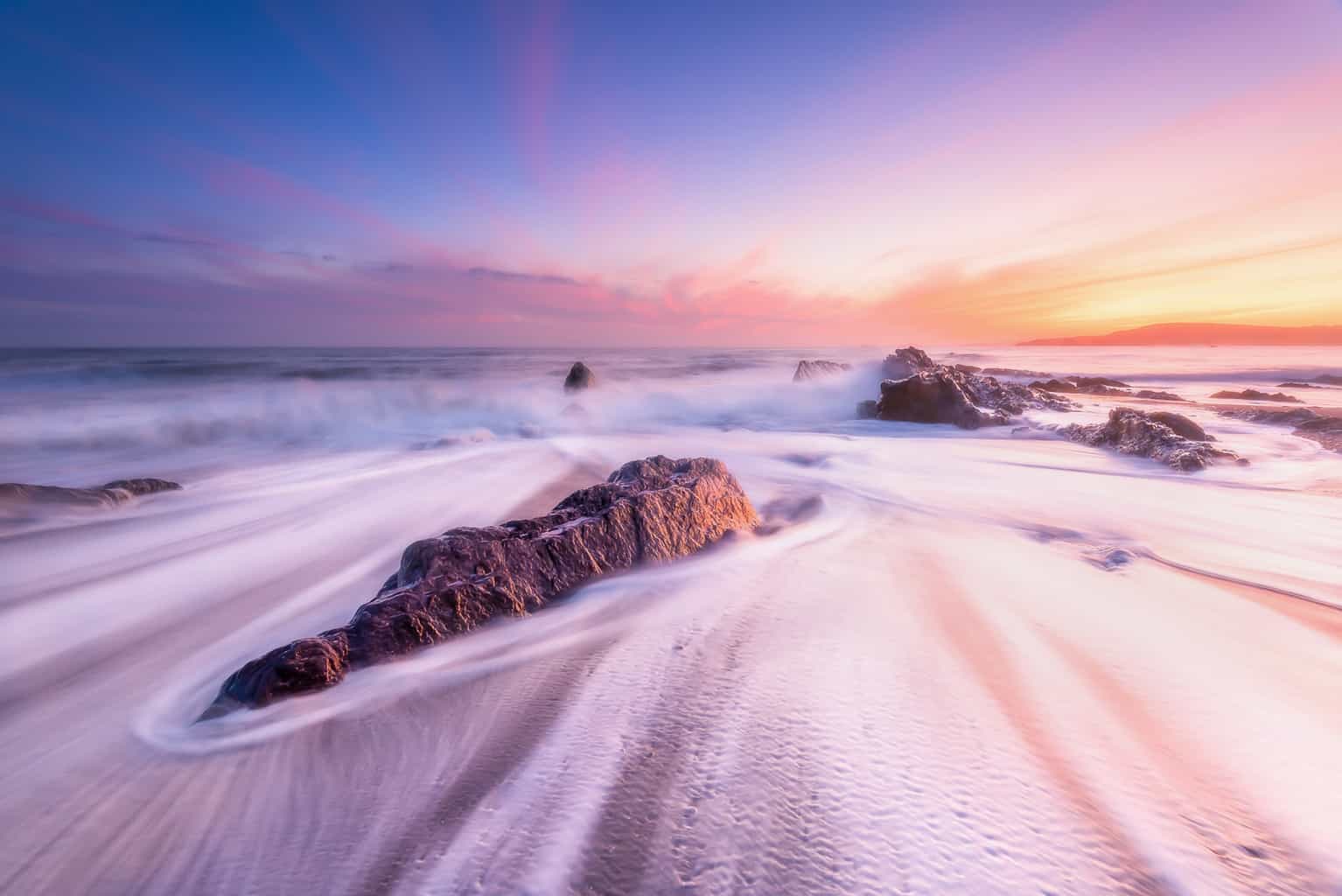
So which ND filter should you buy?
The better option normally is to go for a filter kit as it will have a selection of filters in it and it’s a lot cheaper to buy a kit then buying a few filters and filter holder separately.
My go to filter kit is the Elia Locardi filter kit from Formatt Hitech which has a 10-stop ND filter, 4-stop ND filter, a filter holder, polarizing filter and 3 stop Graduated ND filter included in the kit making it perfect for starting out. I have a complete review of The Elia Locardi kit here. I am also in the fortunate position that I can offer you a discount code on their filters.
10% off Formatt Hitech filters worldwide with discount code…
HAYES10
How to pick your ND filter.
I normally suggest clients go out and take photographs of a place they really want to capture (that’s nearby) at the time or lighting conditions they want to capture it in. So let’s say it’s your local beach then what you do is pop down at the time of the day that you want to take a photograph of it, say Sunrise, Midday, Sunset or if you want those dark dramatic cloud stormy overcast days then go for it.
With apps like ND Expert on your phone, tablet or computer, you can work out exactly what ND filter you need to take that Long Exposure photograph you are dreaming of…
So how exactly does it work?
Your Photographs hold the key.
Follow these simple steps to unlock them.
- Open the photograph you wished you had the long exposure image of in your photography editing software or you can also check your photographs details on your computer. You are looking for your shutter speed here. Once you find it write it down or remember it. For this example let’s say it was 1/60th of a second.
- Open the ND Expert app by clicking here. You can download the app also and use it on your phone, it’s really very handy to have with you all the time.
- Put the shutter speed into the Exposure time, so as I said above we will use the example of 1/60th. This is the shutter speed your camera used to correctly expose the image in the light you wanted to capture the long exposure in, this is a very important detail.
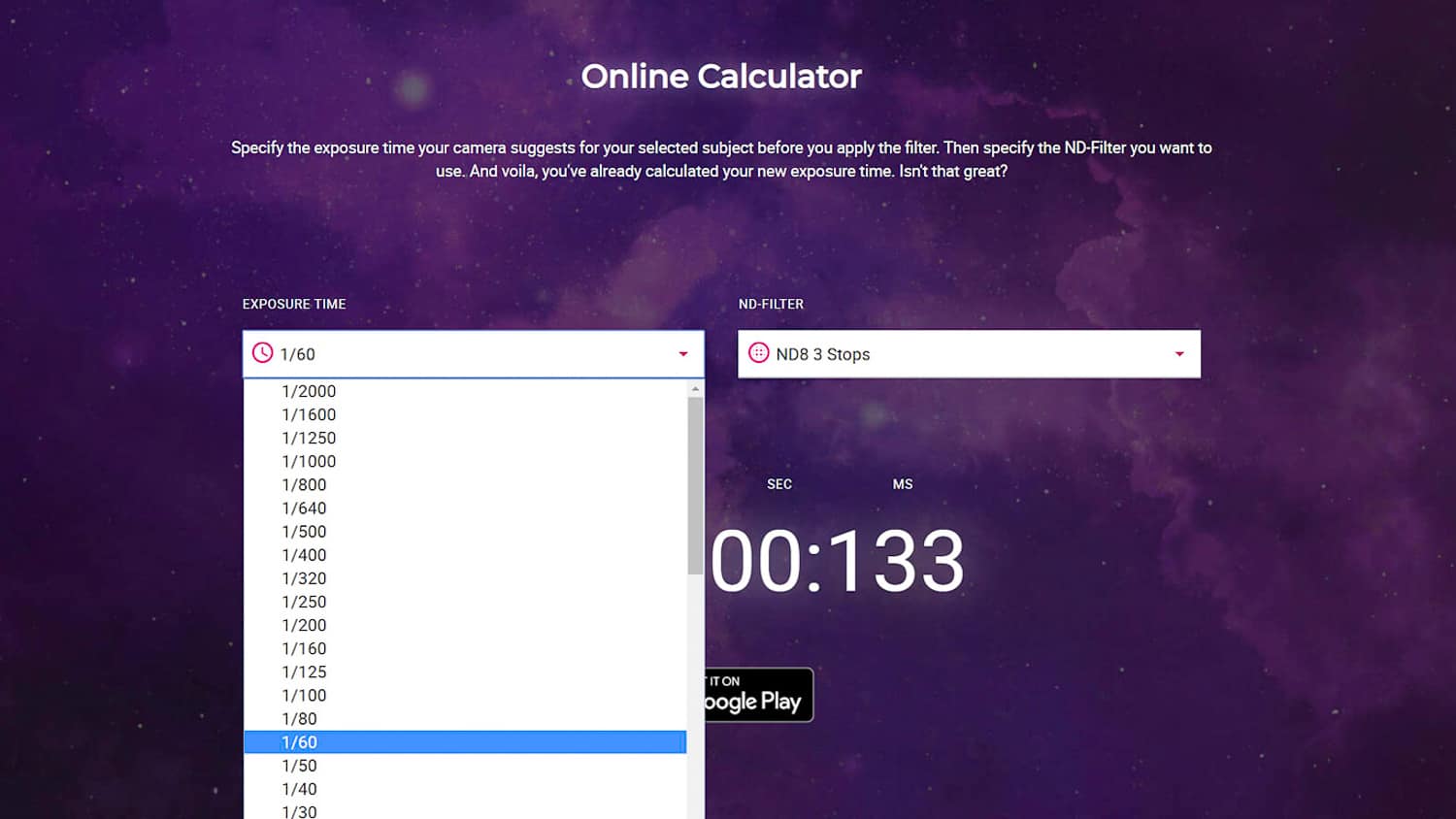
4. Once the shutter speed has been added next we simply need to add the ND filter Strength. So if you change it to say a 10-stop ND filter you notice now that you get an exposure time now of just over 17 seconds. What this means is that your camera needs to take the photograph for 17 seconds to expose it correctly.
A tip here is that ND filters get stronger the higher the number goes so 6 stop ND filter is weaker than a 10 stop ND filter.
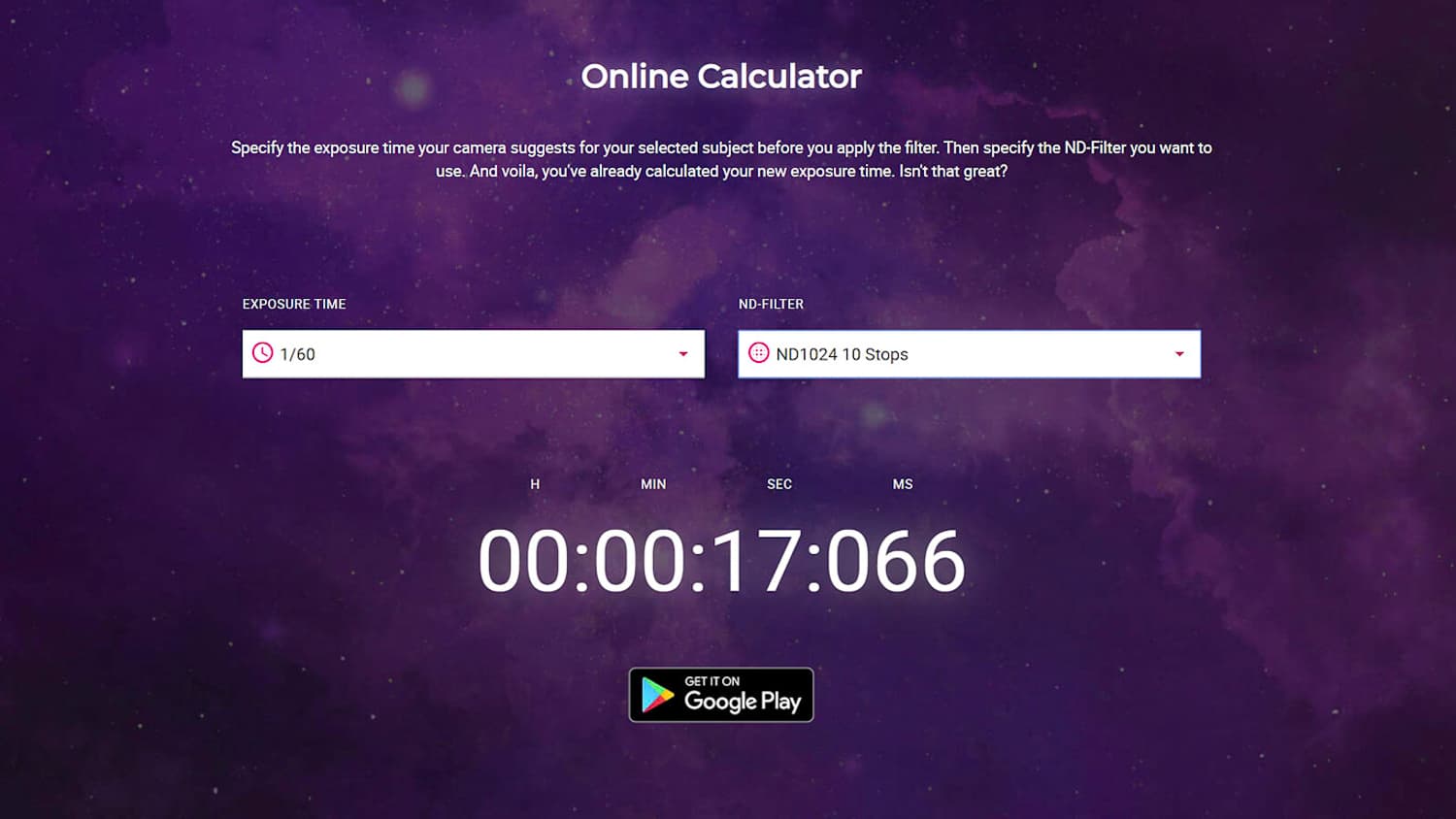
5. If you wanted a one second exposure you just try different ND-filters strengths until you hit the one second mark. In this instance it would be a six stop filter.
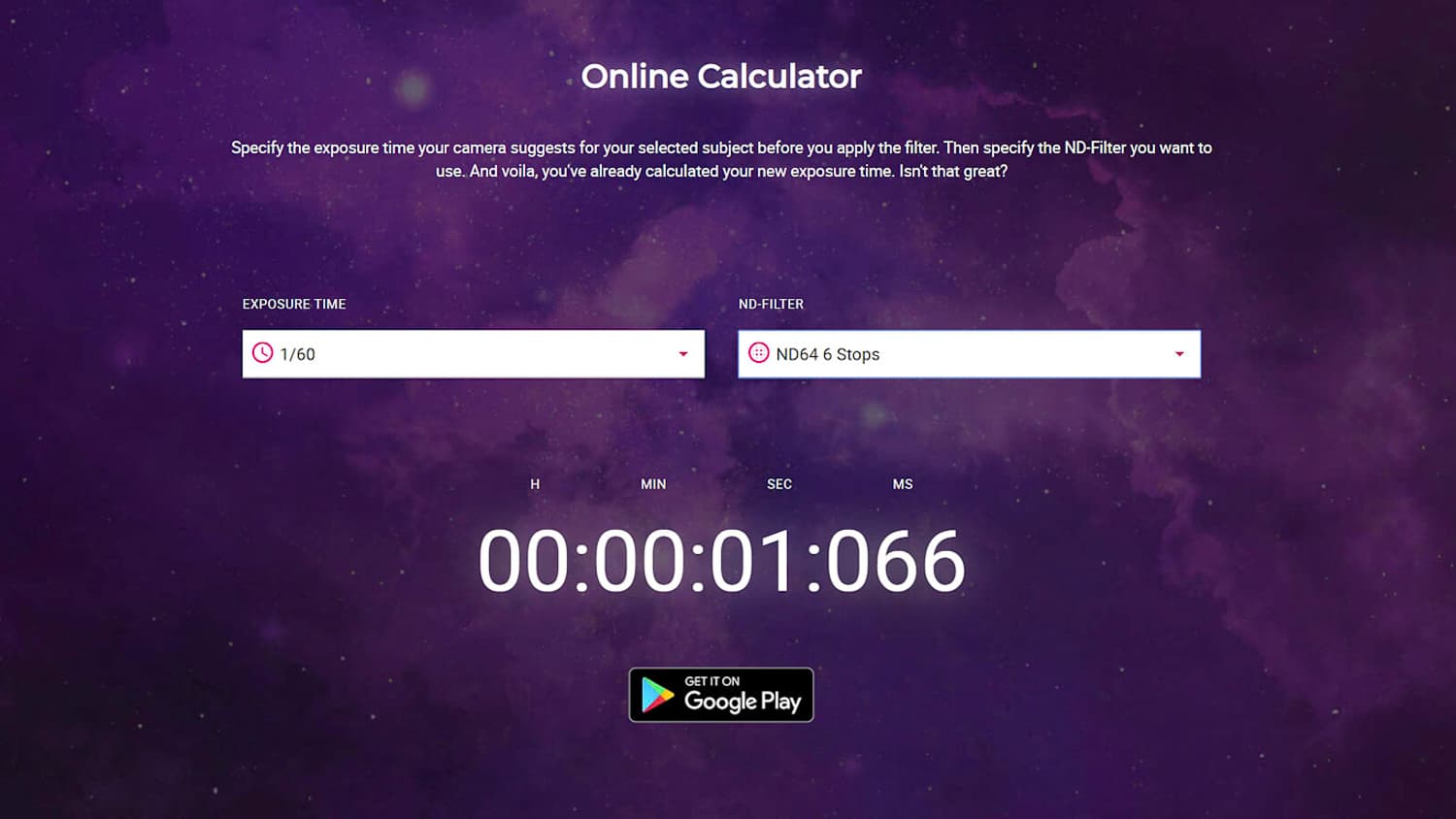
So that’s how we can use our existing photographs to work out exactly what ND filter you need to capture the shot..
Now a nice little trick for a few of ye looking to shoot long exposure with cloud movement is to pop your camera on a tripod and take a photograph then 10 seconds later take another one. Have a look at the two images and see how far the clouds have moved between the two exposures. If they are moving too much then try 5 seconds, if they are too little try 20 seconds between shots.
This will tell you how long the exposure needs to be. Now isn’t that a handy little cheat 🙂
Have a look at my photography tips and tricks section in the menu where I cover everything from…
ND Filters explained and how to choose the right ones, Seascape Photography explained simply, Long Exposure photography tips, My Photography Workshops and Jpeg vs Raw
To help you answer the first question about which physical type of ND filter you need then please have a read here of my Square vs Circular filters and which one is right for you.
I really hope this helps you and if you have any questions then please feel free to ask me.
See you out there,
Kieran.
